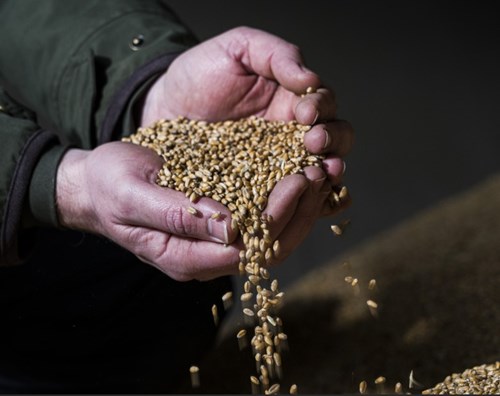Considerations When Using Home Saved Seed

Many growers will be itching to get drills into the ground early this spring in the hope that they can establish crops before the inevitable floods or droughts, we have become ever more used to - although I do like to remain optimistic.
With tight margins, many will have already made plans to use existing stocks of non-hybrid home saved seed, however in anticipation for drilling, there are some important considerations which should be made.
A Clean Sample
Grain should be run over a cleaner. This removes contaminants such as weed seeds, chaff as well as split seeds and smaller grains. A clean sample of cleaner bolder grain, will have more vigour, make calibrating seed rates easier and make sure that seed will flow better in the drill, helping to avoid any embarrassing blank strips.
Seed Testing
A 200g – 400g (depending on test required) seed sample should be sent to the lab for testing. Your SAC consultant can provide further information on how to do this. Please contact your local SAC Consulting office if you require help with this and to discuss requirements.
The minimum requirement is to test seed for germination and thousand seed weight (TSW), requiring 200g seed, however, testing for seed borne diseases is also available and should also be considered, depending on your circumstances (more info below).
The turnaround time for results will be a few weeks, so don’t leave this to the last minute. A quicker Tetrazolium test is available; however, this only a proxy for germination.
Ideally your germination will be 85% - 90% (certified seed requires a germination of over 85%).
Testing for Seed Borne Diseases
When sending your seed to the lab for germination and TSW testing, you will be given the option to test for seed borne diseases.
For spring barley, the disease testing package, will require a 400g sample and will include loose smut, leaf strip, net blotch and Microdochium + fusarium (causing seedling blight).
The total cost for germination, TSW + disease would be approximately £117 + VAT per sample, whereas a simple package for a stand-alone germination and TSW will cost approximately £34 + VAT. Prices are subject to change.
The type of disease test required will depend on the type of cereal being tested, for example, net blotch and leaf stripe will not be a problem with spring oats, so it will not be offered as a test.
Is It Worth It?
When using home saved seed, I would almost always recommend testing for seed borne diseases. It is particularly important for growers who have chosen not to apply a seed treatment, as this strategy only works well if the seed is free from disease, and you are drilling into warmer soils later in the season.
Disease testing is particularly important if you are repeatedly using the same batch of home saved seed as this can lead to the significant accumulation of seed borne diseases over just a few seasons. So having seed tested is a must!
Although most growers will choose to treat seed, it is worth noting that there is a range of different seed treatments available, offering different levels of disease control, so a disease test can play a useful part in your decision making, when it comes to choosing the correct treatment.
In previous years we have been seeing a bit more net blotch in crops and this could be because of fewer seed treatments targeting this disease.
Loose smut is another disease which can build up rapidly between generations, with few seed treatments offering effective control, so if it is present in seed another option should be considered.
The Impact of Drilling Conditions
Growers should be reminded of the dangers of drilling into cold soils, which in parts of Scotland will commonly stay at 1°C right through to April. Drilling into cold soils, will mean that emergence will be slower so the risk of seedling blights that reduce emergence will be greater.
It is worth noting that microdochium and fusarium (seedling blight) can arise from soil as well as seed.
Calculating a Seed Rate
Figure 1 below provides a seed rate calculation for spring barley based on a germination result of 86% and a thousand seed weight (TSW) of 42.2g/1000 seeds. The calculation provides an adjustment for different field conditions (good, fair and poor) at the time of sowing and assumes a target established plant population of 325 plants/SqM

It is worth keeping in mind, that higher seed rates may also be required if:
- Late drilling, after mid-April.
- Poor drainage or wet seedbeds.
- Trash problems from previous crop.
- Seedbed rough and drilling conditions poor.
- Seed of low germination percentage.
- Anticipated slug or vermin problems.
- No or reduced rates of seed dressing applied.
- A very low TGW variety.
5 Top Tips
- Ensure grain is run over a cleaner.
- Test your seed for germination, TSW and the appropriate diseases.
- Seed testing has a turnaround time of a few weeks, so don’t leave it to the last minute.
- Calculate your seed rate and adjust depending on field conditions and other environmental factors.
- You are not alone; your SAC consultant can help.
George Gauley, Consultant, George.Gauley@sac.co.uk

Unearthed is the exclusive SAC Consulting members' monthly newsletter. Unearthed offers insights and tips from our experts on what we think is in store for farming and crofting in the coming months in order to protect and enhance your business.
Posted by Unearthed News on 13/02/2025
